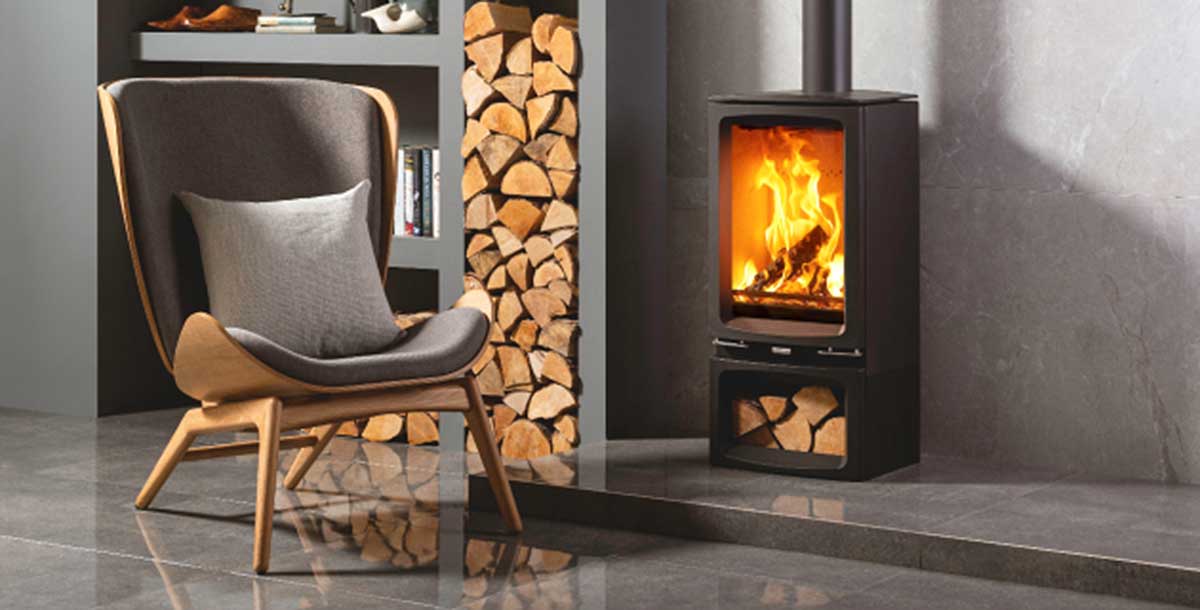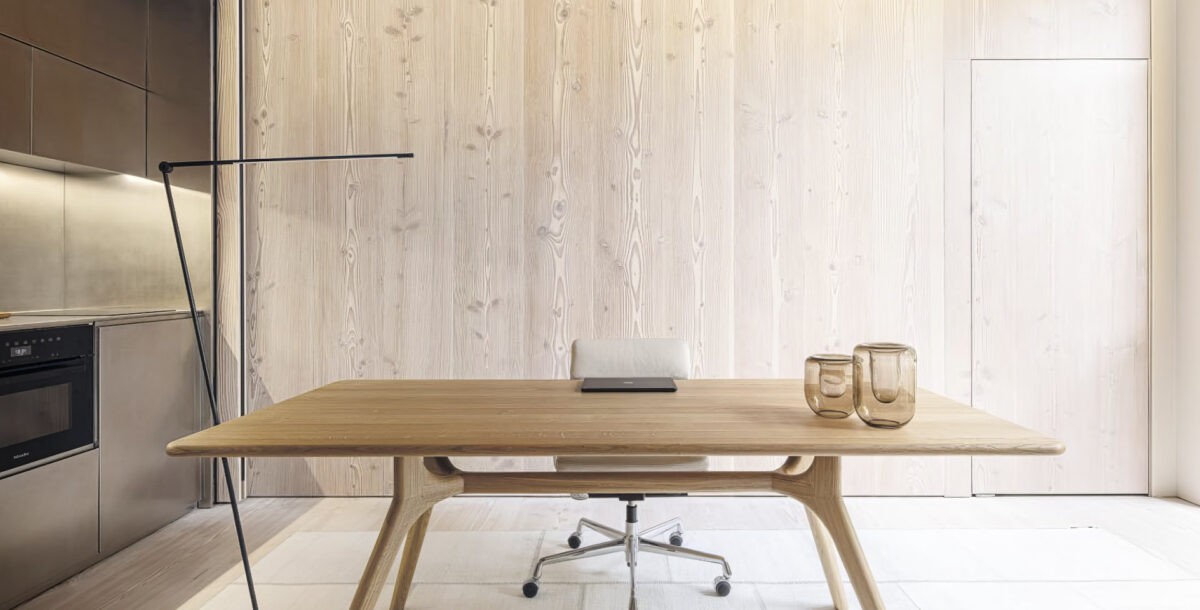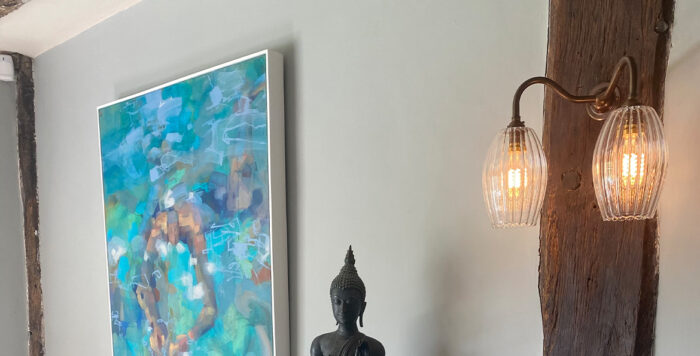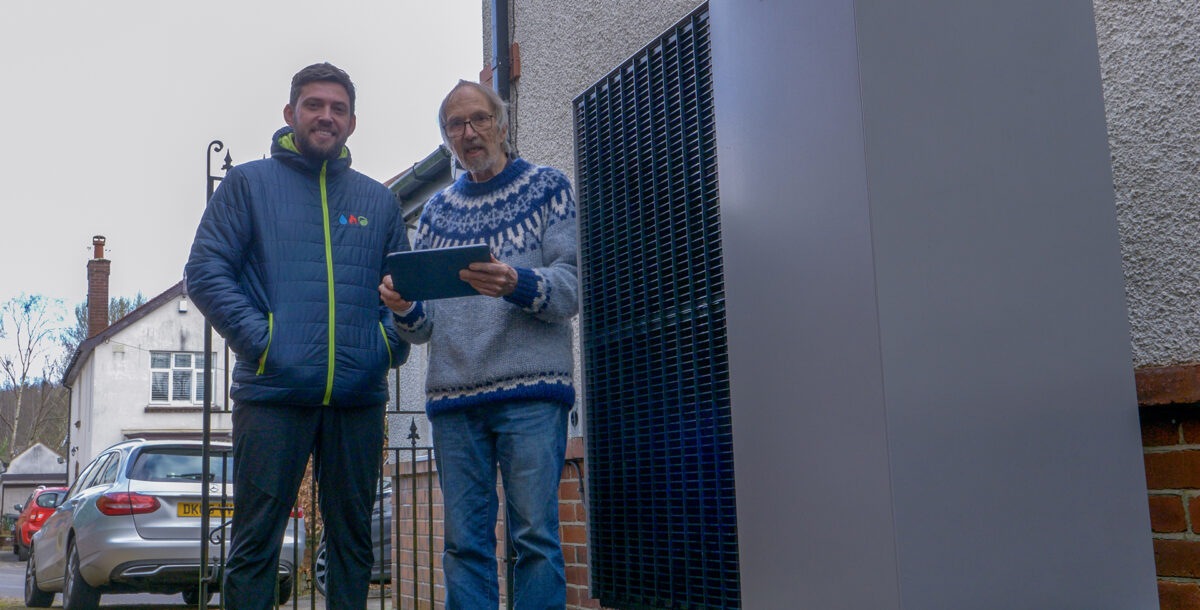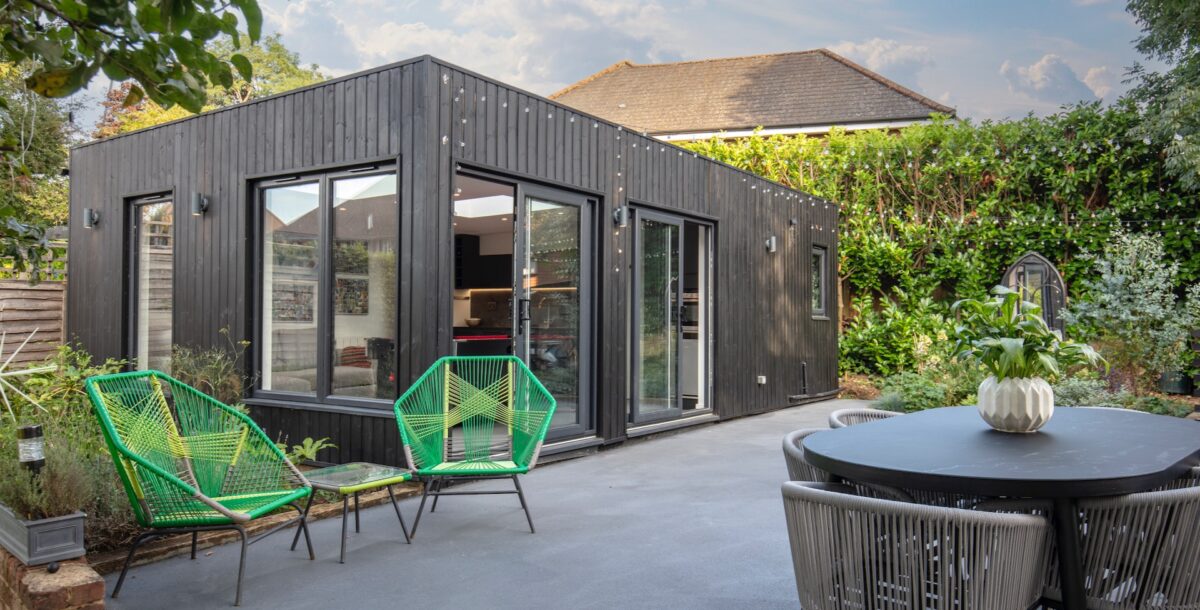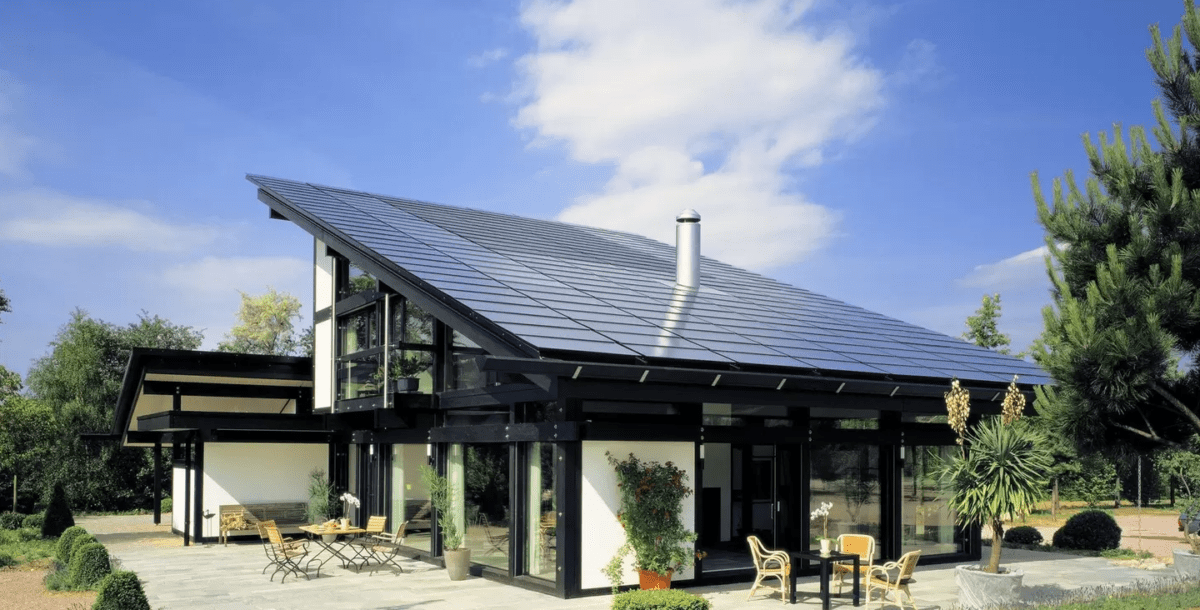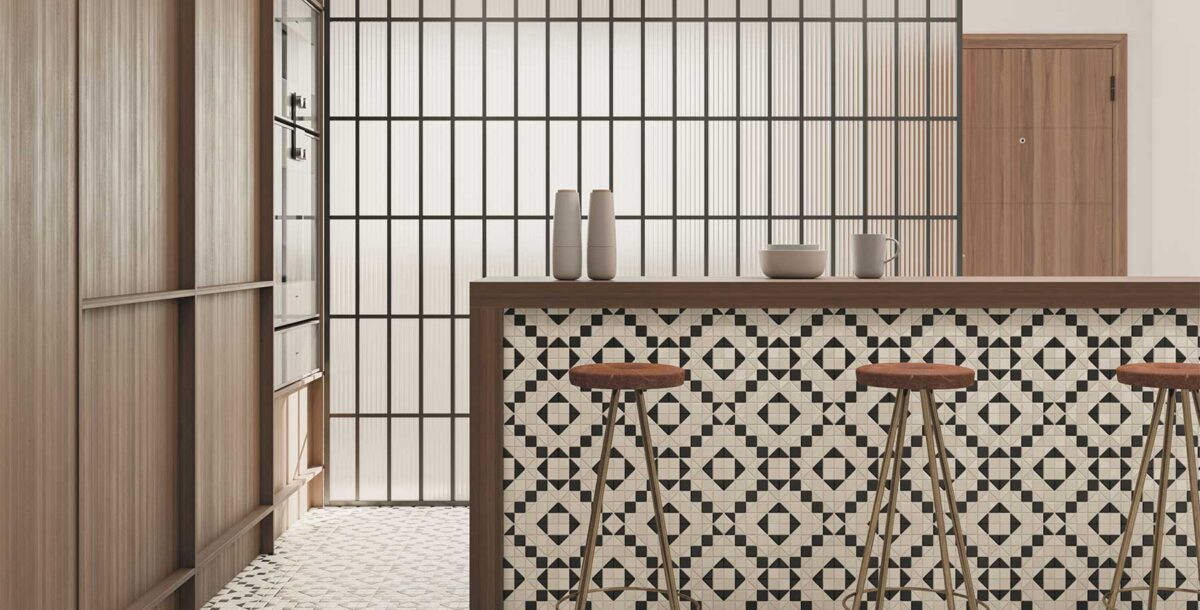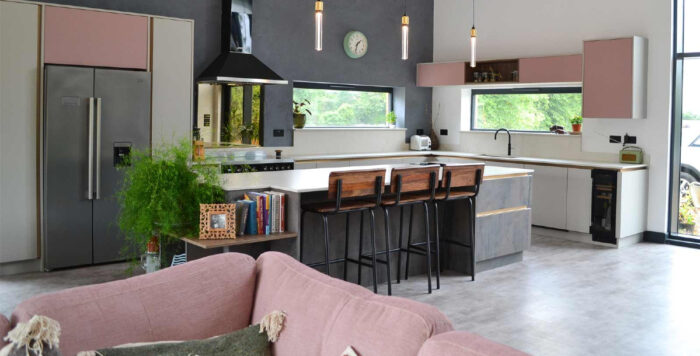Modern stoves: a buyer’s guide
Wood burners, multi-fuel, gas or electric - which is best for your home?
Stoves are becoming increasingly popular, especially wood burners. Freestanding, wall-hung, mounted on a base or placed in a fire surround, whichever style you choose, the Heating Equipment Testing and Approval Scheme (HETAS) recommends that a lined flue is fitted as part of the installation process for a multi-fuel or wood-burning stove.
Heat output is measured in kilowatts (kW), and matching the size of stove to the room it will be warming is crucial. You’ll need to take into account the room’s proportions, whether it’s open-plan and how well it’s insulated; check with your supplier or installer before you buy, or ask your plumber to carry out a heating survey.
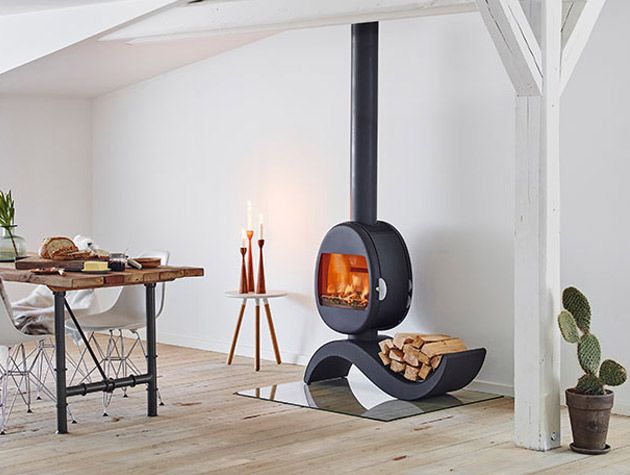
Photo: scan.dk
Wood burners
The latest designs are up to 90% energy efficient, compared with only 15% for open fires. Logs are inexpensive and sustainable; make sure you use seasoned fuel for maximum heat output. If you live in a built-up area, you can burn logs only in a Defra-exempt appliance that’s designed to produce very little smoke and is approved for use in controlled zones.
Many contemporary models blend great design with advanced cleanburn technology, so they’re efficient and produce less smoke, too. Inset stoves, built into a wall or false chimney breast, are a good idea if space is limited. Some models have glass doors on three sides which makes them ideal as a central focal point.
Stoves with rounded fronts, side panels and double doors also showcase flames beautifully. Wood-burning stoves come in two types. Radiant models supply heat through the glass and stove body to warm the immediate surrounding area, which makes them best for occasional use.
Convection models, on the other hand, heat the whole room – cool air is drawn into a convection chamber, then warmed as it rises before flowing out. Prices range from £400 to £5,000 (excluding installation), depending on style and heat output.
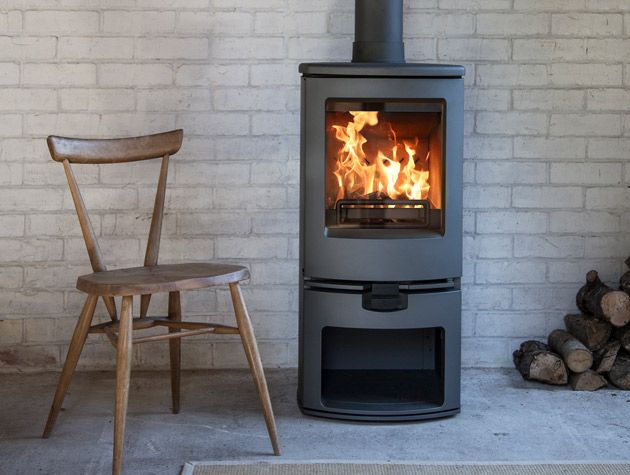
Photo: Charnwood
Multi-fuel models
A versatile option, these stoves burn smokeless fuel, anthracite and peat briquettes as well as wood. If you’re using only timber, buy a dedicated log burner; a multi-fuel design is a better choice if you want to burn smokeless fuels, don’t have a regular wood supply or have limited space to store fuel. Smokeless materials burn better with air entering from beneath, so this type of stove has a riddling grate for more efficient combustion – the ash is collected in a pan beneath.
In Smoke Control Areas, you can burn smokeless fuel, which needs topping up less frequently and gives more heat per kg than wood. However, lighting it is more time-consuming, and emptying the ash pan daily can be a chore.
Designs tend to be traditional fireboxes on legs, although some come with a pedestal for a more contemporary feel. Wall-hung models are available as well as classic double-aspect stoves, with doors back and front that open into adjacent rooms. Some versions benefit from cleanburn and airwash functions, while other high-end models have an external ash pan. Get an existing chimney checked before installing a multi-fuel stove or, if there’s no chimney, a rigid flue system can be built, either straight up and through the roof, or out through the wall and up the side of the building.
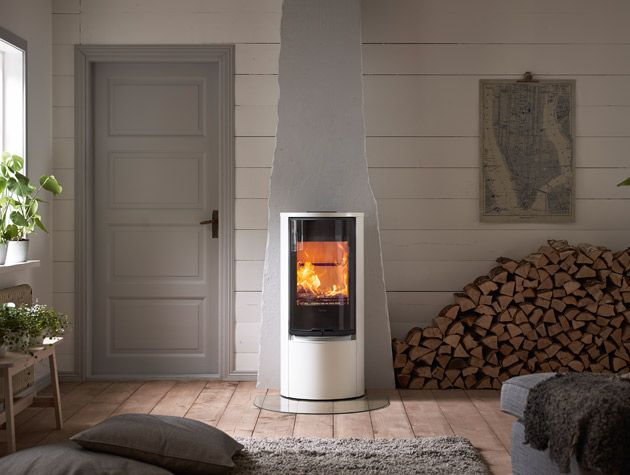
Photo: Contura
Gas and electric
These models have come a long way in terms of design, style and efficiency. Electric stoves run off a 13-amp plug and don’t require a chimney, flue or pipework. They provide immediate heat at the flick of a switch via a fan heater, and certain models offer a uniquely quiet operating system that uses a row of fans to create heat and the appearance of a real fire. More expensive designs have realistic flame and smoke effects, along with burning logs or coal and a glowing ash bed. During the summer months you can enjoy the visuals without heat output.
Gas stoves combine a log- or coal-effect fire with adjustable warmth; remote-controlled models allow you to regulate the flame effect and heat output. Featuring the same styling as solid-fuel models, traditional designs tend to come with log storage so you can enhance the illusion of authenticity.
Contemporary stoves are often available with the option of a pedestal or a specially manufactured stove bench to raise the appliance, and make the flames more easily visible. Alternatively, you could go for a sleek inset model. Electric stoves start at about £200 and don’t have any fitting costs, while gas models are more expensive and you’ll also need to factor in the price of installation.
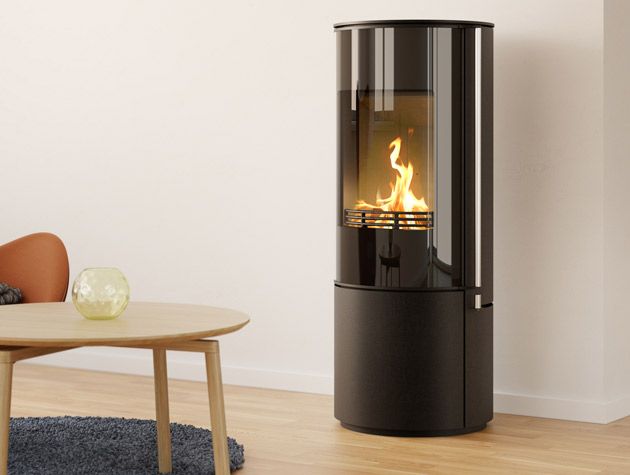
Photo: Docherty

